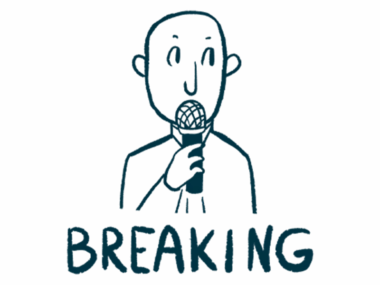Brain Training Using the Conductor
Written by |

Imagine that it is a bad day, and you are also in a Parkinson’s disease “off-period.” Normally, it would be time to rest, right? But what if family arrives for dinner?
It was the only time they could manage in their busy lives, and I really wanted to see them. The only solution was to find a way to manage the chaotic stimuli flooding into my brain, to be mindful of all motor movements, and to present myself as social and civil. I was able to do so using what I call the conductor.
My only small cognitive error was mixing up people’s names. It was a major accomplishment. Afterward, I was exhausted.
I am just beginning to understand how the conductor works to help with those awfully bad days. It takes time to learn how to apply the conductor in a way that replaces old habits, which I call “fixing the flat tire.” At times, I say to myself, “You know this will pass. You know it doesn’t stay this bad all the time. You know you will have good days. Your job right now, in the middle of the worst of it, is to tell those around you where you are and to practice holding the pause for the conductor.”
The conductor idea is something I use to help me cope with Parkinson’s disease and an important part of that new face I’ve implemented. The conductor idea stems from the idea of deep brain stimulation. For example, can the brain do its own modified form of DBS using the mental construct of a conductor to moderate the signals coming into the brain?
We already have something like that in our brain – an ability to self-monitor while engaged in thinking, feeling, and acting so that our emotions don’t spill out. It is our ability to observe ourselves with genuine nonjudgmental curiosity while also holding a pause between impulse and reaction.
In that pause is the doorway to a calm mind through meditation. The calm mind helps to expand the pause and strengthen it against intrusion. How we frame that pause shapes how it is used. If we seek calmness, we will discover it in the pause.
This application of intent is part of the conductor’s role. We can direct that intent at discovering ways of living better in the moment, regardless of what else is there. My new face reflects the belief that there are always undiscovered possibilities within the expanded pause.
For the conductor to have a good chance of success, there must be a pause in the normal stream of consciousness that allows a shift to that perspective. We draw from many resources, which gives us the energy needed to hold the pause and extend both its duration and its resistance to interference. Every moment of the day, we either add to this energy reserve or withdraw from it.
It is about the little things every day. Every day, I am redirecting my actions, thoughts, and feelings away from what makes me sicker. My full-time job now is learning how to live better with a chronic disease. I am not looking for a quick fix. I am looking to retrain my brain.
The following is an easy exercise I use to evaluate my conductor status. Starting in a comfortable and relaxed position, I relax my breath. This is not a contest and only works if relaxed. I breathe in a way that engages the conductor and can lead to a shift in perspective.
Counting breath exercise
When breathing in, say at a mildly slow pace, “One thousand and one.”
When breathing out a little more slowly and more deeply than normal, mentally count at a normal rate, “One, two, three,” and so on until you finish exhaling. Don’t push the breath. Be relaxed.
Next, continue the inbreath with the next count, “One thousand and two,” followed by counting during the outbreath.
Repeat this while counting.
If your thoughts or feelings intrude and cause you to stop counting, observe why and then start the inbreath count again,“One thousand and one.”
I have done this exercise during the worst of times and it was hard, but I was still able to keep track of progress. Remember, there is the relaxed pause, the intent of curious, nonjudgmental observations, and conductor practice within the exercise.
How far can you count during the inbreath before losing track and starting over? What caused you to lose track? How many counts happen on the outbreath, and what affects that?
It takes less than 15 minutes to achieve positive results with this exercise.
These are the beginning steps of conductor brain training and its application toward learning how to live better with Parkinson’s disease.
***
Note: Parkinson’s News Today is strictly a news and information website about the disease. It does not provide medical advice, diagnosis or treatment. This content is not intended to be a substitute for professional medical advice, diagnosis, or treatment. Always seek the advice of your physician or another qualified health provider with any questions you may have regarding a medical condition. Never disregard professional medical advice or delay in seeking it because of something you have read on this website. The opinions expressed in this column are not those of Parkinson’s News Today or its parent company, Bionews, and are intended to spark discussion about issues pertaining to Parkinson’s disease.






Derek C. Marshall
Is this a yogic technique or something specific to PD?
This would probably be beneficial for anyone, am I right?
Dr. C
Hi Derek ~ I will be addressing this issue in the next "Neo" column in probably late October or early November. Keep checking in!
Dr. C.
Donald Double
I like this approach. I practice yoga and meditation. I've just been diagnosed at age 73. So incorporating a daily discipline i think will be important. Thanks for your contributions.
Dr. C
Hi Donald ~ Thanks for reading the column and your comments. The ideas in this column will be expanded upon in columns published in September through November. Several recent columns, already published, talk about the conductor in more detail. It would be great to hear from you about how yoga helps with your PD symptoms. I agree -- a daily discipline is helpful in many regards.
Dr. C.
Deborah W.
Hello Dr. C
I have read many of your columns and find them relevant to my situation. I am 68 (female), diagnosed with PD 7 years ago. In the early '90's, I left my job as an art teacher, at an inner city school, traveled to Hawaii , and lived at an ashram where I learned about and experienced.
a variety of spiritual practices. Over the years, I have developed my own "spiritual practice." One of the practices I do when feeling frustrated,.angry, despondent, etc. is to silently sing a Beatles song, "Let it Be". I've trained myself to become aware of my negative thinking rather quickly, and replace those damaging thoughts with a.song I can hear in my brain. Over and over, until I'm clear and peaceful. Basically, I'm just changing the tape running in my head.
I'm not sure what the allowable word count is for this reply, but I do want to mention a couple of things. Do you know about "predictive coding".? Its when the brain tries to guess the next move based on info it already has. I think it could be relevant here. But, gotta go. I'll write more at another time. Thanks for your columns.
Dr. C
Hi Deborah ~ I appreciate your reading my columns and will look forward to additional comments and insights. I identify the "predictive coding" in my columns on scenario looping and the auto-pilot. Predictive routines can malfunction in PD during scenario looping or auto-pilot. I like your Beatles "mantra", another example of mindful focus in PD management. I don't think there is a word count on comments and I would like your insight to any other of my columns that interest you.
Dr. C.
Thomas Verrier
Hello,
This article is wonderful and so helpful!!! I would love to reach the author!!!!
My name is Thomas Verrier; I am on the faculty of Vanderbilt University, where I am a professor at the Blair School of Music and conduct the University Wind Symphony.
It has been four years since I first detected a feeling of disconnection and a decline of motor skills in my right arm, hand, and fingers while conducting. I had trouble with muscle memory, and when I reviewed my conducting videos, I realized that my arms sometimes moved out of sync. Others had noticed signs even earlier, starting years before. I received criticism from those who, understandably, misinterpreted the cause of my issues. Despite having decades of conducting experience, this was a period of self-doubt and loss of confidence. I thought that I was having an artistic crisis. Why did I no longer feel as connected to the phrasing of the music? Why was it more challenging to navigate meter changes and mixed meters? Why was I having difficulty with the kinesthetic connection to rhythm and pulse? At the time, these very early signs could not have been connected to my eventual diagnosis, but I can now look back and connect the dots.
I never even considered the possibility of Parkinson's Disease. Doctors told me I was suffering from Thoracic Outlet Syndrome, then potentially some form of Dystonia. Finally, I was referred to the Vanderbilt Movement Disorder Clinic. Two years ago, I was finally diagnosed with PD.
It took time for me to come to accept that Parkinson's Disease will significantly shape my future. However, “acceptance” has not meant “resignation.” Quite the opposite—it has provided me with a strong sense of purpose and motivation.
On World Parkinson’s Day, I posted an essay on my Facebook and the responses from not only friends and acquaintances, but also from conductors/musicians around the world, prompted me to initiate a Facebook/Instagram page as well as YouTube channel that I call Conducting Parkinson’s
https://www.facebook.com/profile.php?id=61575733316856#
https://www.instagram.com/conductingparkinsons .
My goals are not only to share my journey but to provide a space for other conductors and musicians to share their stories as well. I hope that by sharing and comparing experiences, those facing Parkinson’s will not feel alone. Conducting Parkinson’s is intended to foster a supportive network of conductors and musicians with Parkinson’s and inspire perseverance and adaptation.
Would did it be possible to connect with you for a conversation?
Thank you so much for your time.
All my best,
Thomas Verrier